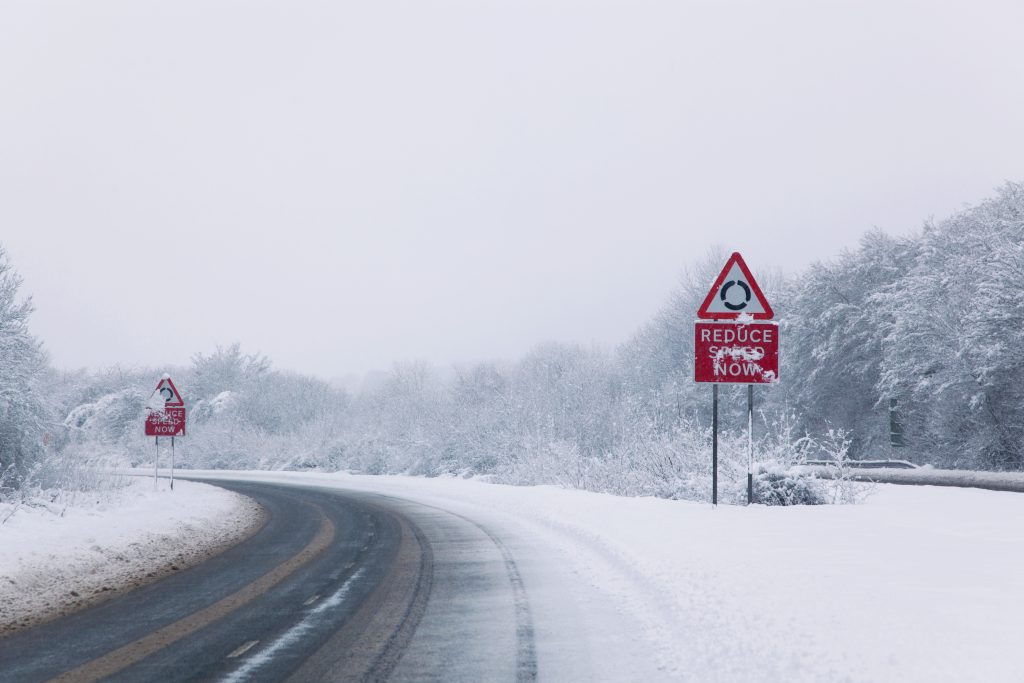Winter motoring checklist – five top tips for winter driving
As the weather worsens and the dark nights get longer, it’s important to make sure your car is winter-ready – especially if you’re the driver of a wheelchair adapted vehicle. Our guide explains how to adjust to the changing conditions and stay safe in your vehicle this winter.
1 – Get your vehicle winter-ready
It’s a good idea to have your vehicle serviced before winter hits. If this isn’t possible, you can carry out your own checks. Make sure lights are clean and working, check your battery is fully charged and ensure your brakes are in good working order. Top up your fluids, especially oil and windscreen wash with added antifreeze, making sure that this is to the correct concentration to prevent it from freezing. Check your tyre pressure too, ensuring they’re pumped up to manufacturer’s specifications (if you’re not sure what the correct pressure is, it will usually say underneath your fuel cap cover). Tyres should legally have a tread depth of over 1.6mm, but between 2mm and 3mm is often recommended in winter to give extra grip in wet and icy conditions.
2 – Make sure you have good vision and visibility
In winter it’s important that you have good visibility and can be clearly seen by other drivers. Make sure all your windows are clean, as well as your lights and number plates. Many people swear by using toothpaste to clean their headlights and get them sparkling!
When it comes to de-icing, use either a scraper or a de-icer spray. But, don’t set off until your windows are clear. If you set off before your windows have fully cleared and have an accident, you may be liable because your view was restricted. Avoid pouring hot water onto the glass as it might cause it to crack, and don’t use your windscreen wipers until the ice is clear or you run the risk of damaging them. It goes without saying that it’s a bad idea to leave your car unattended if you’re keeping your engine running to defrost your windows using the heat.

3 – Create an emergency kit
It might sound a bit extreme but keep an emergency kit in your car, especially before a long journey in adverse weather conditions. You probably already have anti-freeze and de-icing equipment, but you should also carry things such as a tow rope and shovel, wellies, a hazard warning triangle, a torch, a blanket and a first aid kit. If you’re travelling a long way, it’s wise to take emergency food rations (including a hot drink in a flask) and an in-car mobile phone charger.
4 – Plan your journey
Check the local weather forecast and travel bulletins, as well as for the places you’re travelling through and ending up in. If the emergency services are recommending you don’t travel, then avoid making the journey unless it’s necessary. If you must travel, let someone know where you’re going and when you hope to arrive, and plan alternative routes in case you get thrown off course. In all cases, make sure you have a full tank of fuel before setting off, know the route as best you can (don’t just rely on mobile phones as you could lose signal), and allow extra time for your journey.
5 – Adjust your driving
You’ll need to adapt your driving style to the weather conditions, which means slowing your speed and making gentle manoeuvres. Allow more time for braking and accelerating and leave more space than usual in between you and the driver in front. Try to stick to main roads where you can as these are more likely to have been cleared or gritted and have good lighting. If you start to skid, try to stay calm and steer gently in the direction you want your car to go.


